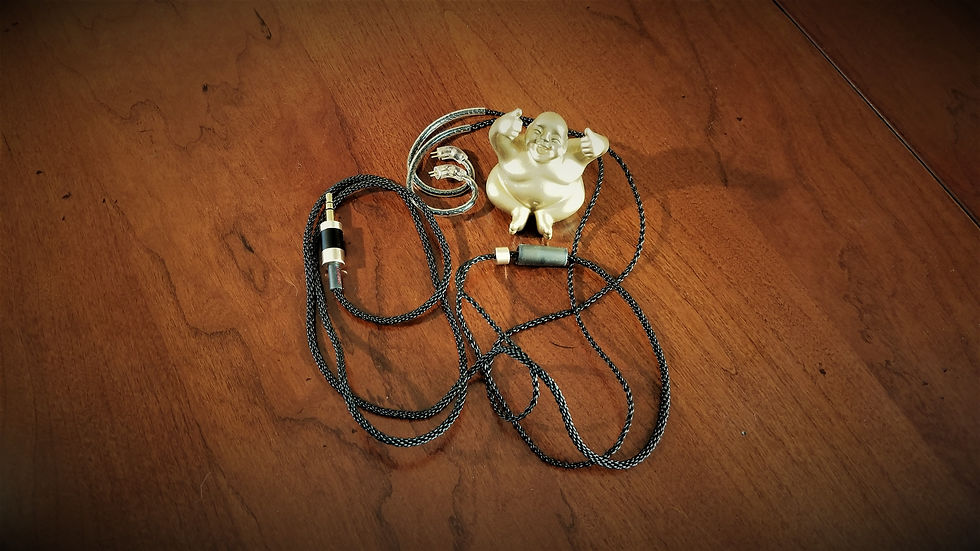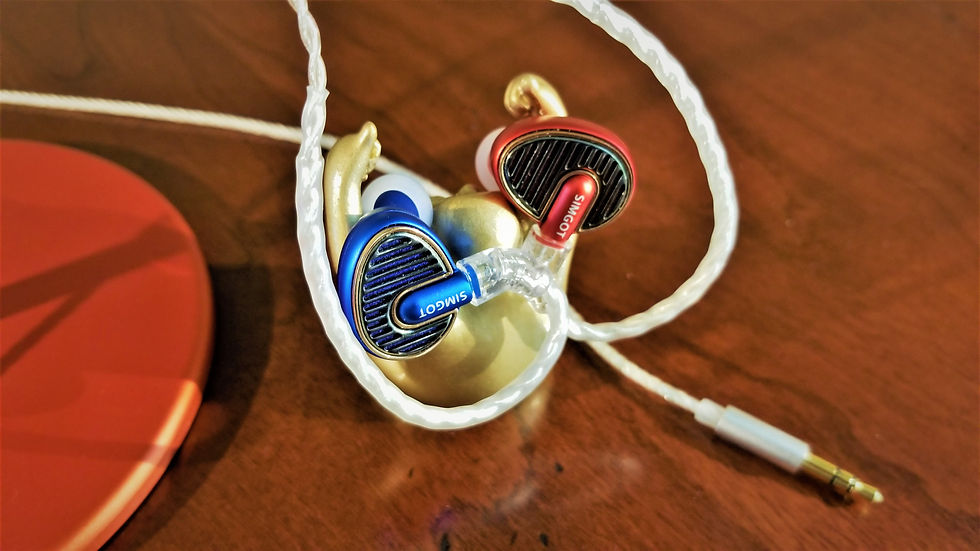Simgot EN700 Pro: even and unoffensive, ft. the Moondrop Starfield in comparison.
- inToit Reviews
- Jul 12, 2020
- 4 min read
Updated: Oct 3, 2020
Hey all!
Welcome back to the Neighborhood. It’s Your Friendly Nieghborhood Reviewer with InToit Reviews, coming at you with, what seems to be, a new classic at this point. The Simgot EN700 Pro.
So, let’s get InToit!

The Simgot EN700 Pro has been out for a few years now, and in terms of Chinese IEMs that is ancient, so, does it still stack up to the competition? The short answer is “Yes,” but let’s get into the specifics.
The Simgot EN700 Pro is a single dynamic driver IEM inside an aluminum, metal shell. The grill on the front face of the unit is styled a bit like a car from the 60’s from my standpoint. The version I have on loan from a supporter of the channel, has a red and blue colorway, with the right IEM being red, and the left IEM being blue. The pain-job on these IEMs is a metallic, powder-coat that shines a bit like candy in the right lighting. In my opinion, these are visually unique, striking IEMs that look like nothing else on the market really.

The connection at the earphone is a 2-pin connector type, and this will be my first grip in terms of the build. The connector is straight off the side of the IEM, and this will make the type of cable that you select with this IEM to be extremely important from a fit perspective. With most aftermarket cables, the connector pin, simply juts to far out when the line has a straight connection. Instead, I much prefer the feel of cables with elbowed, angled, connecting joints.
The stock cable, not only had an angled connecting joint, but also an aggressive hook that accommodated the weird placement of the 2-pin connector on the shell itself. While the built-in chin slider was a nice touch, the cable itself was made out of harsh rubber material that was somewhat unpleasant to the touch. Additionally, the terminating 3.5mm plug is a bit fat for modern standards, and I had difficulty using this with my phone as it was too wide in diameter to slide into my phone with its case on. I found that the Jade Audio EA3 cable was a much better match, with this in mind, than the EN700 Pro’s included stock cable.

The EN700 pro also comes with a brown, leather, hard-shell, carrying case that, at purchase, houses the two silicone tip options, which vary this IEM’s sound signature. Simgot describes Eartip I as powerful mid-high frequency with high resolution and penetration, and crystal-clear sound. Eartip II is described as enhanced bass and superior listening comfort, with outstanding attenuation of ambient sibilance, and neutral and bass-driven sound.
To my ear, Eartip I offers a more mid-forward presentation in term of sonics and vocals alike, with a slight elevation in the treble, and a bass that focuses more on the mid-bass than its other low-end frequencies. Eartip II is smoother and more even in general. Vocals are more in the mix and the bass extends deeper into the sub-bass region. Out of the two, for what the EN700 Pro does, I prefer Eartip II, but the sounds that these two tips produce with the EN700 Pro are more similar than different, and I ultimately found both tips to be quite pleasing to listen to.

In general, I would say that the EN700 Pro is a balanced, non-offensive sound signature that is relaxing to listen to with any genre of music; especially for long-term, listening sessions. With these, I rarely ended up skipping tracks. Sonics are universally smooth, and have a pleasantly accurate, neutral, warm timbre to them. Imaging is good, and the placement of instruments within space is accurate, but separation and other soundstage characteristics are a weak-points for this set; but I wouldn’t call them deal-breakers either.
In fact, the presentation of the Simgot EN700 Pro is very comparable to the similarly priced Moondrop Starfield ($119 vs $109). So, separation and other soundstage components are mostly analogous and sufficient comparatively; even if they aren’t amazing in either. Stages for both are somewhat boxed-in, but less intimate than say a KZ ZSX. There is some dept and height to the stage, but neither characteristics are anything to write home about in either set.

Also like the Starfield, details and resolution are pretty good, but I would not call them great. I would say that the Starfield might be slightly more detailed, while the Simgot is more resolving. The bass of the EN700 Pro is less bombastic and more linear than in the Starfield, and there is less general grain and treble glare in comparison; but also, less air and stage depth.
I was lucky enough to be able to go back and forth between the EN700 Pro and the Starfield for this review, and, while both sets are relaxing and jack-of-all-trades juggernauts, I ultimately prefer the approach of the Simgot. The EN700 Pro is simply smoother, slightly more resolving, better timbred, and more even sounding, which I’ll take at the expense of some air and insignificant depth of field improvements in the soundstage. Having said, I will note that some might perceive the Starfield as slightly more immersive, but, in saying this, I am splitting hairs. Furthermore, the EN700 Pro was more consistent across sources, and was less sensitive to sourcing between the two sets.

In the end, the Simgot EN700 Pro is a non-offensive, jack-of-all trades juggernaut of an IEM that is generally pleasing and relaxing to listen to for long periods of time. While it lacks some dimensionality, instrument differentiation, and staging sophistication, it is still an easy recommendation at its price point- even above other similarly priced earphones, such as the Moondrop Starfield. Simgot offers a nice package here, which is smooth, not only in its build and aesthetics, but also its sound.
And thanks to a supporter from The Neighborhood for sending in the Simgot EN700 Pro for review. Check out all The Neighborhood access locations in the description below. And just a reminder that at the 1K subscriber mark, I’ll be doing it again, and giving away another set of Koss KSC75’s. And don’t forget about the Patreon for only $1.50 a month. Becoming a Patreon will get you early access to blog reviews at the 1.1K subscriber mark, and a big thank you to everyone who’s supporting the channel in any way they can! And with that, I’m out… for now…

InToit Reviews YouTube: https://www.youtube.com/channel/UCDhV3KByLSY2roqZ2aQ0XKg
InToit Reviews Patreon: https://www.patreon.com/intoitreviews
InToit Reviews Twitter: https://twitter.com/IntoitReviews
InToit Reviews Instagram: https://www.instagram.com/intoitreviews/



Comments